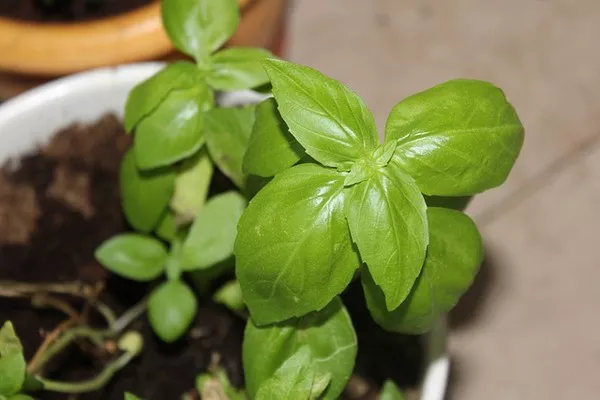Basil, with its aromatic leaves and diverse culinary applications, is a favorite herb among home gardeners. Growing basil in pots is a convenient and space-saving way to ensure a fresh supply for your kitchen. To successfully cultivate healthy and vibrant basil plants in containers, it’s crucial to understand their specific needs and provide proper care. This comprehensive guide outlines essential steps and tips for nurturing thriving basil in pots.
Choosing the Right Pot and Soil
Selecting an appropriate pot is the first step in ensuring your basil thrives. Opt for a container that is at least 12 inches in diameter and has drainage holes to prevent waterlogging. Basil prefers well-draining soil, so choose a high-quality potting mix with good aeration and moisture retention capabilities. A mix designed for herbs or vegetables is generally suitable.
Sunlight Requirements
Basil is a sun-loving herb that requires ample sunlight to flourish. Choose a sunny location for your potted basil, ensuring it receives at least 6-8 hours of sunlight daily. If you’re growing basil indoors, place the pots near a south-facing window to provide sufficient light. Supplemental artificial lighting, such as fluorescent or LED grow lights, can be used if natural sunlight is limited.
Watering Considerations
Proper watering is critical for the health of basil plants. While basil prefers consistently moist soil, it’s essential to avoid overwatering. Ensure that the soil is allowed to dry out slightly between watering sessions. Water the plants at the base to prevent water on the leaves, as wet foliage can lead to diseases. Additionally, use a saucer under the pot to catch excess water and prevent root rot.
Feeding and Fertilization
Basil is a moderately heavy feeder and benefits from regular fertilization during the growing season. Use a balanced, water-soluble fertilizer with equal parts nitrogen, phosphorus, and potassium. Begin fertilizing when the first set of true leaves appears, and continue every 2-3 weeks throughout the growing season. Be cautious not to over-fertilize, as this can lead to excessive leaf growth with diminished flavor.
Pruning and Harvesting
Regular pruning is essential for maintaining the bushy and productive growth of basil plants. Pinch off the tips of the branches regularly to encourage lateral branching and prevent the plant from becoming leggy. Harvesting is a form of pruning that not only provides you with fresh basil for culinary use but also stimulates new growth. Harvest the leaves when the plant is well-established, but avoid removing more than one-third of the plant at a time.
Pest Management
Basil is susceptible to certain pests, such as aphids, spider mites, and whiteflies. Keep a close eye on your plants and take prompt action if you notice any signs of infestation. Insecticidal soap or neem oil can be effective and are safe for edible plants. Regularly inspect the undersides of leaves where pests often congregate, and remove any damaged or infected foliage to prevent the spread of diseases.
Companion Planting
Consider companion planting to naturally deter pests and enhance the growth of your basil. Plants like marigolds, nasturtiums, and tomatoes can act as natural pest repellents, creating a more balanced and resilient garden. Be mindful of the compatibility of plants and choose companions that have mutually beneficial relationships.
Temperature and Humidity Control
Basil thrives in warm temperatures and prefers a moderately humid environment. Ensure that the temperature remains between 60-90°F (15-32°C) for optimal growth. If you’re growing basil indoors, be mindful of indoor heating or cooling systems that may affect the temperature and humidity levels. Adequate airflow around the plants can also help prevent fungal diseases.
Overwintering Basil
Basil is sensitive to cold temperatures and is typically grown as an annual in colder climates. However, you can attempt to overwinter your basil plants indoors. Before the first frost, carefully dig up the plants and transplant them into pots. Place them in a sunny indoor location, and reduce watering to allow the plants to go into a dormant state. While not all basil plants will survive the winter indoors, this method can extend the lifespan of your plants.
See Also: What Do Plants Need To Survive? A Comprehensive Guide
Conclusion
Caring for basil plants in pots requires attention to detail and a proactive approach. By providing the right conditions – from choosing the right pot and soil to managing sunlight, water, and pests – you can enjoy a bountiful harvest of fresh, flavorful basil. With a little care and patience, your potted basil plants will not only enhance your culinary endeavors but also add a touch of greenery and fragrance to your living space.


